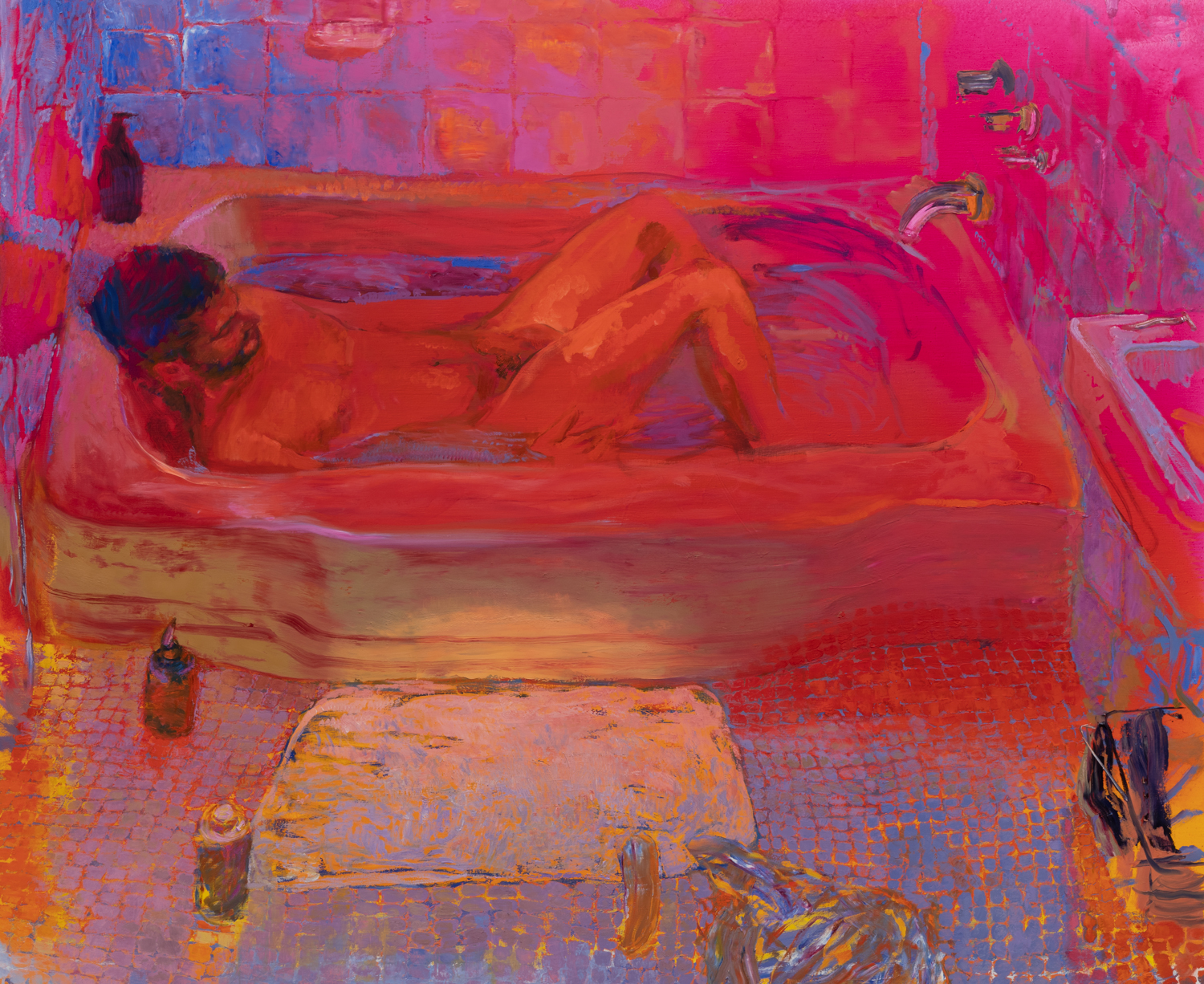
Doron Langberg, Bather, 2021. Oil on canvas, 80 × 96 inches (203.2 × 243.8 cm). Gift of the Wilks Family. Courtesy the artist and Victoria Miro, London. Photo by Mel Taing. © Doron Langberg
A prominent voice among a new generation of figurative painters, New York-based Doron Langberg has gained a reputation for vivid, luminous paintings that foreground intimacy and touch. Depicting himself, family, friends, and lovers, Langberg’s paintings center on lived experiences and the ways that painting amplifies the physical and emotional resonances of living.
Langberg’s process begins with small, observational studies made of graphite, oil paint, and colored pencil, which he translates into large-scale paintings. Rich with texture and color, the finished canvases evoke atmospheric moods that often privilege private, domestic moments and intimate gestures. Bather depicts a man immersed in a bathtub filled with water. Details such as various bottles and the rumpled clothes on the floor complete this everyday scene. A common subject in the history of art, the bather has appeared in the works of many artists, from Titian to Paul Cézanne, who frequently portray women bathers in idyllic landscapes or classical scenes. In this case, Langberg specifically references the French artist Pierre Bonnard’s painting Bather (1935), but importantly replaces Bonnard’s woman figure with an equally intimate portrait of a man—a continuation of Langberg’s centering of queer experiences and his commitment to expand the representation of queer sexualities. Speaking about his work the artist says: “Queerness for me is not just a sexual experience, but a way of being in the world which affects every aspect of my life. Using intense colors and different paint textures and marks to create these everyday scenes, I want to connect with a viewer by speaking to our most basic commonalities—our bodies, our relationships, our interiority—rather than the social categories that may separate us. In creating this connection, I want to make queer pleasure, friendship, and intimacy feel expansive and generative, embodying the full range of human experiences.”